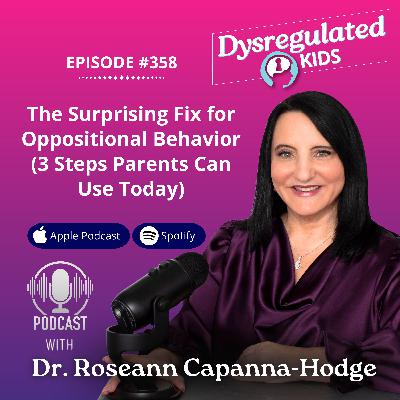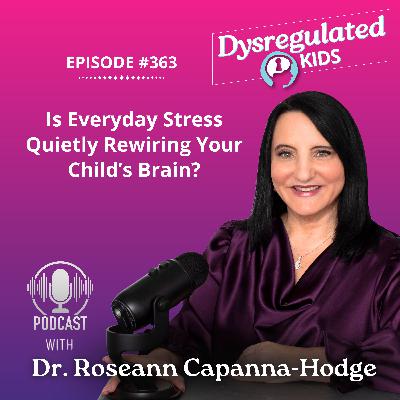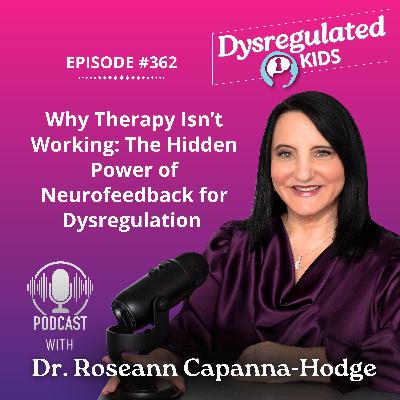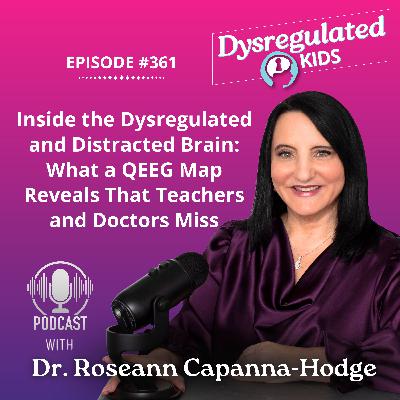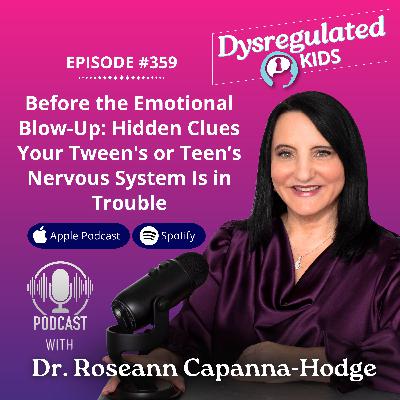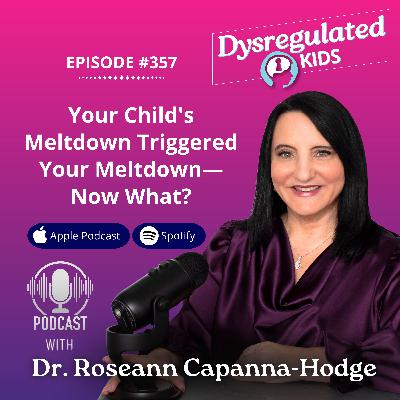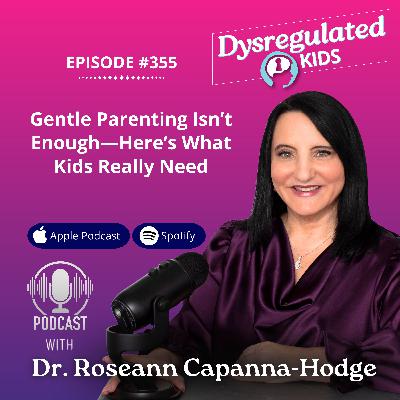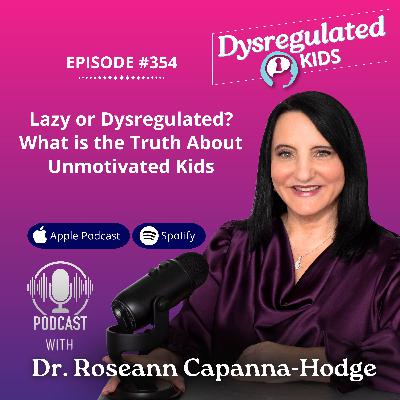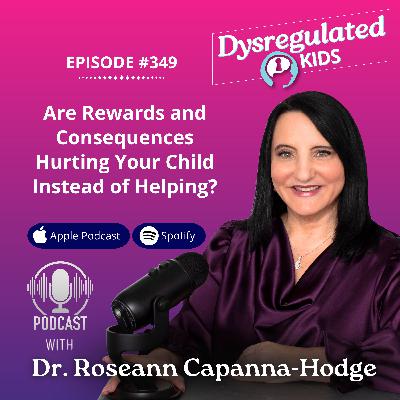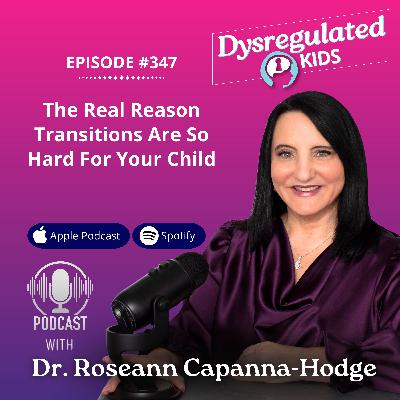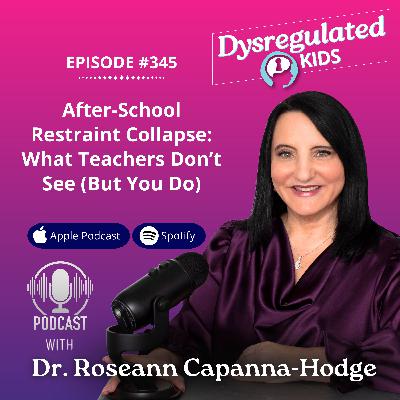358: The Surprising Fix for Oppositional Behavior (3 Steps Parents Can Use Today)
Description
When every request turns into a power struggle, it can leave you exhausted, frustrated, and questioning everything you’re doing as a parent. But here’s the truth: your child isn’t trying to make your life harder—their brain is stuck in survival mode.
Let me break down what’s really happening when kids seem defiant and how parents can shift from chaos to calm using three powerful regulation steps. You’ll learn how to decode oppositional behavior, why it’s not about disrespect, and what you can do today to help your child feel safe and cooperative again.
Why Does My Child Say “No” to Everything?
When your child refuses to listen or melts down over simple requests, it’s not bad behavior—it’s a dysregulated nervous system.
Here’s what’s really happening:
- Their brain has gone into survival mode, shutting down logic and reasoning.
- That “no” is often a stress response, not manipulation.
- Many kids labeled with Oppositional Defiant Disorder (ODD) or other mental health conditions like ADHD, anxiety disorders, or mood disorders are really struggling with nervous system overload.
Think of it like a smoke detector that’s too sensitive—it goes off even when nothing’s really burning. When your child’s stress cup is overflowing, every small demand feels like too much.
Behavior is communication. Your child’s defiance is their brain’s way of saying, “I can’t handle this right now.”
Is My Child’s Oppositional Behavior Really About Anxiety or Control?
For many kids, saying “no” is an unconscious coping mechanism. It helps them avoid anxiety triggers or regain a sense of control when life feels unpredictable.
Here’s what’s going on beneath that resistance:
- Anxious avoidance: Kids learn that saying “no” helps them keep anxiety lower.
- Loss of control: When kids feel powerless, they fight to regain safety.
- Sensory overload: Every transition, sound, or demand adds another drop to their stress cup.
🗣️ “The more dysregulated they are, the more oppositional they become. And when parents respond from stress too, it amplifies the cycle.” –Dr. Roseann
Key takeaway: Opposition isn’t disrespect—it’s the nervous system’s cry for safety and connection.
You don’t have to figure this out alone.
Become a Dysregulation Insider VIP and get your FREE Regulation Rescue Kit: How to Stay Calm When Your Child Pushes Your Buttons and Stop Oppositional Behaviors.
Head to www.drroseann.com/newsletter and start your calm parenting journey today.
What Can I Do When My Child Refuses to Cooperate?
Here is a simple, science-backed three-step plan parents can use right away:
- Regulate first.
- You can’t calm your child if you’re dysregulated yourself.
- Take deep breaths, move your body, or pause before reacting.
- Your calm signals safety and helps your child’s brain shift out of fight-or-flight.
- Offer two choices.
- Keep it simple: “Do you want the red shirt or the blue shirt?”
- This restores healthy control without giving up structure.
- Choices defuse power struggles and build cooperation.
- Reframe your request.
- “Do it now” sounds like a threat to a dysregulated brain.
- Try, “Let’s start with this,” or use “first this, then that” language.
- It shrinks overwhelm and helps kids focus on one step at a time.
These strategies reflect what’s taught in parent management training, parent-child interaction therapy, and social skills training—approaches proven to help kids with defiant behavior, conduct disorders, and anxiety disorders.
Need help regulating in the moment? Download Quick Calm — it’s packed with simple, proven techniques to help you and your child calm the brain fast.
How Can I Stay Consistent Without Losing My Cool?
Consistency doesn’t mean rigidity—it means staying regulated, empathetic, and clear.
To reinforce positive behavior and prevent problem behaviors:
- Model regulation. Your nervous system sets the tone for your child’s.
- Use positive reinforcement. Praise cooperation and effort, not perfection.
- Stick to routines. Predictability helps anxious and oppositional kids feel safe.
- Spend time connecting. Connection builds trust and reduces oppositional cycles.
When parents lead with calm and connection, oppositional behavior softens—because the brain finally feels safe enough to cooperate.
You Can Turn “No” into “Okay”
Your child’s oppositional behavior isn’t a reflection of bad parenting—it’s a sign their brain needs help finding calm. When you regulate first, offer choices, and reframe your approach, you’ll start to see the resistance fade.
Remember: Calm the brain first, and everything follows.
Feel like you’ve tried everything and still don’t have answers?
The Solution Matcher helps you find the best starting point based on your child’s symptoms, behaviors, and history.
It’s fast, free, and based on decades of clinical expertise.
Get your personalized plan now at www.drroseann.com/help
FAQs
How do I get my oppositional child to listen without yelling?
Start by calming your own nervous system first. Kids mirror your energy—when you’re calm, their brain feels safe enough to listen. Then give short, clear directions and offer choices to rebuild cooperation.
Why does my child always argue or say “no” to everything?
Oppositional behavior often comes from dysregulation, anxiety, or overwhelm, not defiance. Their brain is stuck in fight-or-flight mode, trying to regain control or avoid stress. Calm connection helps more than consequences.
Is oppositional behavior the same as ODD (Oppositional Defiant Disorder)?
Not always. Many kids labeled with ODD are actually dysregulated or anxious, not defiant by choice. Calming the nervous system first can reduce the behaviors that look oppositional.
What should I do when my child refuses to follow directions?
Pause before reacting. Take a breath, get calm, then try again with two simple choices. This gives your child a sense of control and keeps cooperation possible.

